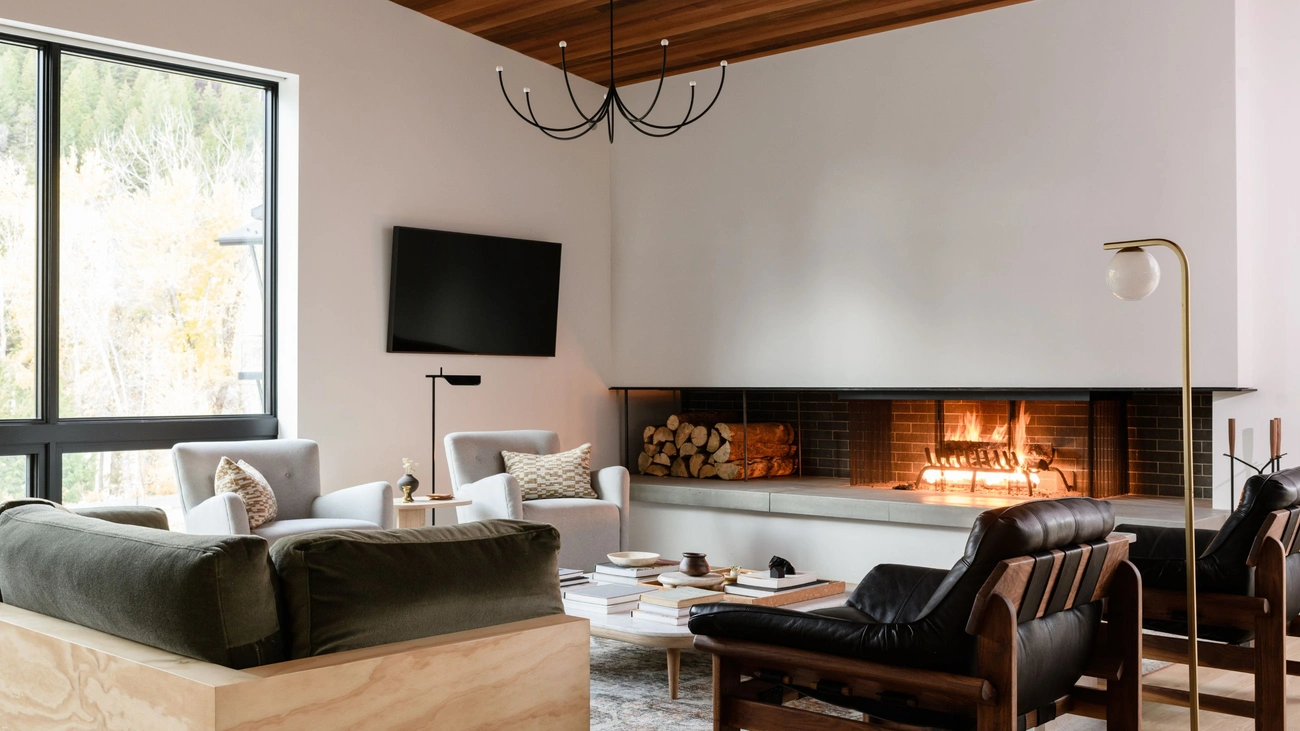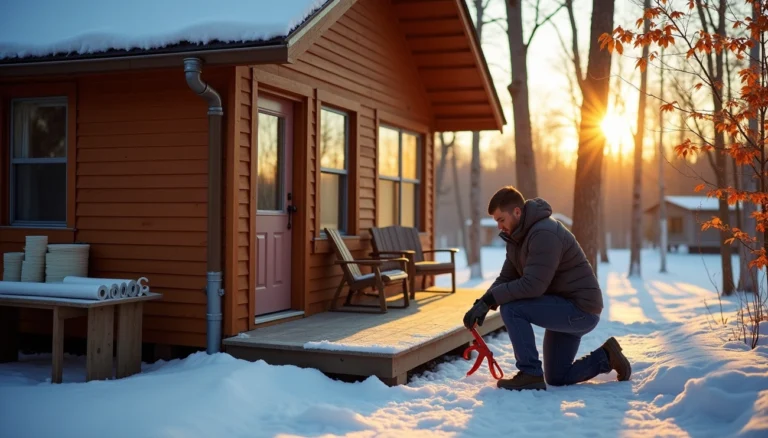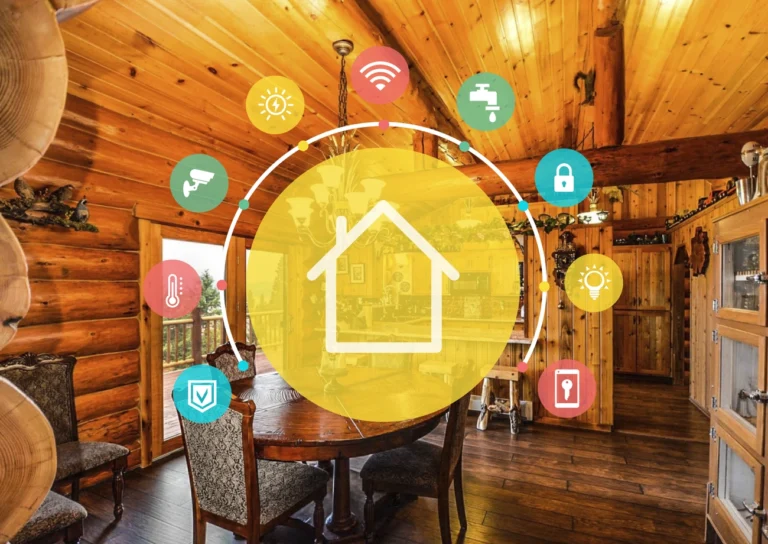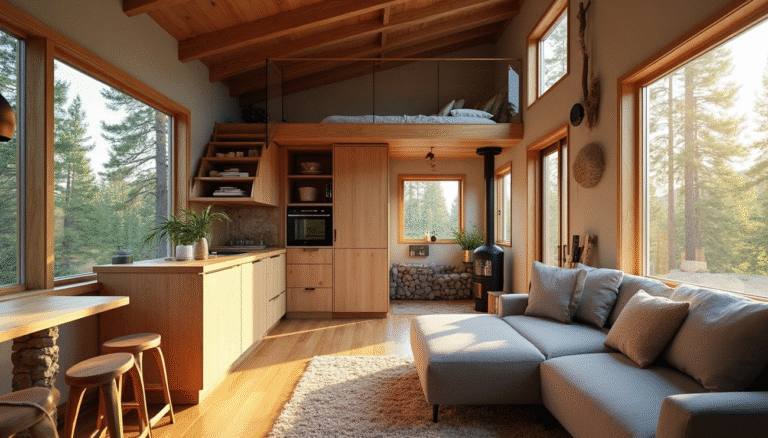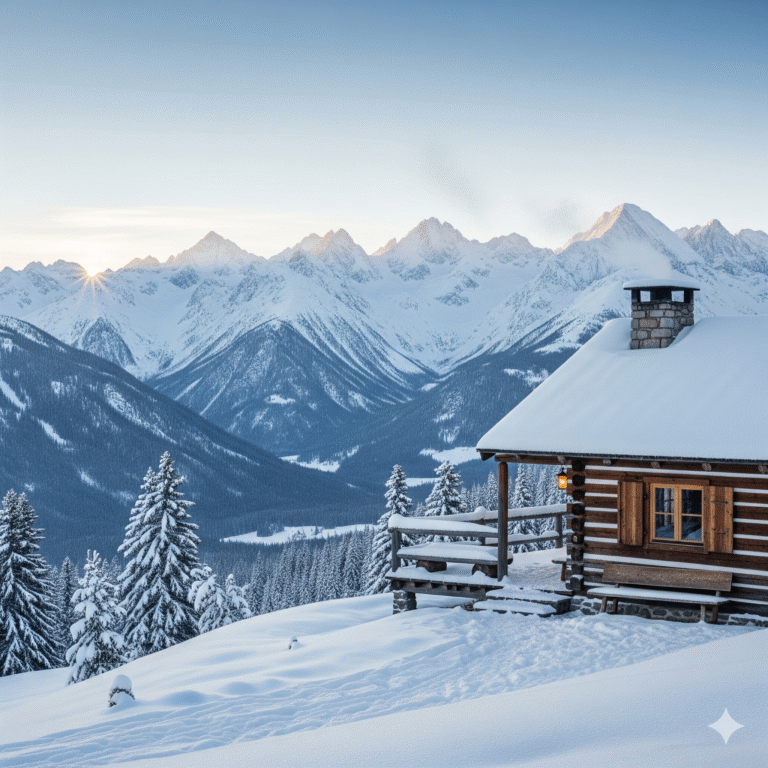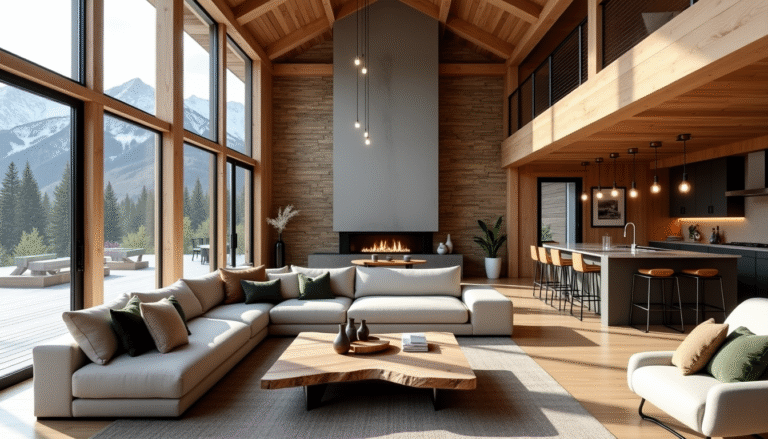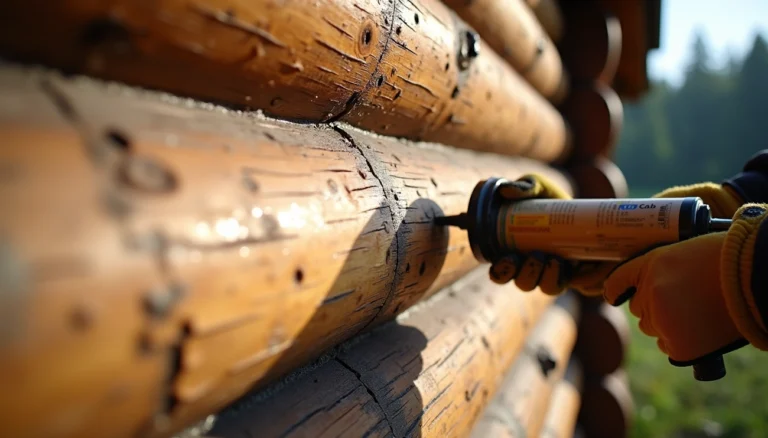Cabin Interior Design Made Simple: From Rustic Charm to Smart Living
Cabin interior design has transformed dramatically. Interest in modern rustic and contemporary cabin interiors has jumped 35% across the U.S. in just three years. Traditional wood-paneled retreats now shine as sophisticated spaces that blend charm with functionality.
Sustainability stands at the vanguard of cabin interior design ideas in 2025. Rustic cabin interior design enjoys a fresh revival with thoughtful updates that solve traditional problems like maintenance and energy efficiency. Today’s contemporary cabin designs feature reclaimed materials that add unique character and reduce environmental impact. Modern cabin interior design ideas cleverly use lofted bedrooms to maximize limited space.
Let me show you how to create a cabin that honors traditional elements while welcoming today’s practical innovations. You’ll discover the perfect balance between rustic warmth and smart living, whether you’re renovating an existing space or planning a new build.
Blending Rustic Charm with Modern Simplicity
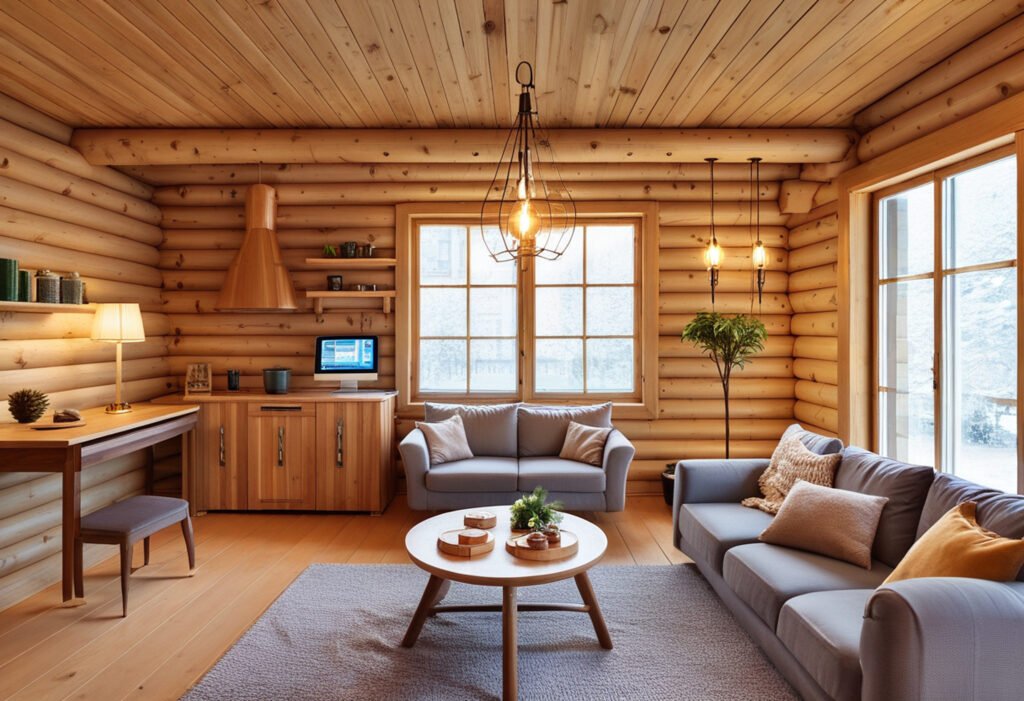
“Rawness and refinement are not opposite ends of a luxurious spectrum. They are two complementary features with which to populate a luxe environment.” — Kelly Wearstler, Award-winning American interior designer, known for bold, maximalist style
The essence of cabin design comes from spaces that feel both grounded and practical. Modern cabin interiors have come a long way from their purely utilitarian origins. These spaces have evolved into sophisticated retreats that honor tradition while accepting new ideas.
What defines rustic cabin interior design
Rustic cabin interior design celebrates the natural world. Natural materials stand at its core – wood beams, stone fireplaces, and organic textures create warmth and authenticity. The design philosophy puts connection to surroundings first. Traditional cabins’ foundation comes from varied natural materials, from wood floors to antlers above stone hearths. This approach makes an inviting atmosphere that feels distant from everyday bustle and offers a genuine retreat experience.
How modern cabin interior design ideas evolved
Cabin design has moved from heavy, log-dominated interiors toward lighter, more versatile spaces. Modern cabin interiors combine traditional cabin warmth with clean lines, open layouts, and contemporary materials. Today’s cabins emphasize simplicity, natural light, and adaptability, unlike the dense designs of earlier eras. Modern cabin aesthetics now lean closer to a farmhouse feel and incorporate whites, neutrals, and earthy color palettes. “Less is more” guides the way now, as minimalist décor replaces cluttered collections of knick-knacks to create more spacious and tranquil environments.
Finding the balance between old and new
Contemporary cabin design excels at blending rustic elements with modern sensibilities. This balance creates spaces that feel both timeless and forward-thinking—perfect for relaxation or entertaining. Successful designs contrast rough-hewn wood beams with polished concrete floors, or match soft, wool-upholstered furniture with sleek steel accents. Stylish spaces with modern architecture can keep their rustic charm. Many designers achieve this by keeping exposed wood elements and stone features while adding contemporary colors, lighting, and technology. The result brings an eclectic blend that sits between trendy and classic cabin aesthetics.
Materials That Make a Difference
Material selection stands as the biggest decision you’ll make in cabin interior design. Your choice of materials shapes not just the look but also determines how the space works and lasts over time.
Natural wood and stone for warmth
Wood remains the lifeblood of cabin design. Darker-toned varieties like walnut, cherry, and oak have become more popular than lighter options. Cedar deserves special mention because it smells great and naturally fights off insects and decay. This versatile material creates a cozy and inviting atmosphere and handles moisture well. Stone makes a perfect match with wood in rustic cabin interior design. Stone does more than look good – it resists fire, saves energy through thermal mass, and lasts incredibly long. These natural elements work together to create spaces that belong in their surroundings.
Sustainable and recycled materials
Today’s cabin interior designs embrace green options:
- Reclaimed wood adds character and helps the environment
- Bamboo and cork grow back faster than traditional hardwoods
- Recycled content materials,like countertops made from recycled paper or glass
Materials from local sources cut down shipping costs and help nearby businesses grow. Some creative cabin owners use timber from fallen trees on their land to build a deeper connection with their property’s story. Green materials like straw bale and hempcrete insulate well and leave a smaller environmental footprint.
Smart use of textures and finishes
Careful layering of textures adds visual depth to modern cabin design. Mixing soft fabrics with rough surfaces creates interest and depth. Natural oils bring out the wood’s beauty better than synthetic varnishes and reduce harmful volatile organic compounds. The right mix of smooth and textured surfaces—like wood with stone or fabrics with metal—creates eye-catching contrasts that bring cabin interiors to life. Small spaces feel more open and welcoming when textures balance each other well. The goal is to create spaces you can touch and feel, helping people connect with nature and escape their daily routines.
Smart Living in Cabin Interiors
“Real comfort, visual and physical, is vital to every room.” — Mark Hampton, Renowned American interior designer and writer, influential in modern residential design
Modern cabins no longer mean complete disconnection from technology. Smart innovations and rustic elements blend perfectly to improve comfort and convenience in today’s cabin living.
Integrating discreet technology
Smart cabin designs now focus on technology that works with natural aesthetics instead of overpowering them. Starlink has made smooth connectivity possible in remote cabins. Smart home systems can blend into the authentic cabin experience. We focused on adding functionality without losing the charm—the technology works quietly in the background.
Energy-efficient lighting and appliances
LED systems with smartphone controls have become essential for cabin lighting. These smart systems cut down energy use and can match natural light patterns to showcase the wood grain’s beauty. The energy management systems keep temperatures comfortable and costs low, working alongside traditional wood-burning stoves.
Voice-controlled and automated systems
Voice control makes cabin living easier than ever. Systems that work with Amazon Alexa, Google Assistant, and Apple HomeKit let you:
- Adjust lighting, temperature, and entertainment with simple commands
- Create tailored voice commands for specific scenes like “Security” or “Goodnight”
- Control multiple devices simultaneously, perfect for small spaces
Cabin owners with limited connectivity can use offline voice control systems that keep data local for privacy.
Hidden tech in furniture and fixtures
Your cabin’s rustic design can stay intact while adding modern technology through clever hiding spots. Custom cabinetry matching your cabin’s style can hide TVs and speakers. Smart plugs turn regular outlets into device control centers without needing new smart appliances. The cabin’s timeless appeal stays unchanged while you enjoy modern conveniences.
Color and Style Trends for 2025

The palette for the 2025 cabin aesthetics shows a beautiful blend of traditional elements and innovative design. The upcoming trends reveal color and style choices that celebrate nature with sophisticated accents.
Earthy neutrals and warm tones
Cabin interiors embrace a return to earthy foundations in 2025. Benjamin Moore’s Color of the Year 2025, Cinnamon Slate, combines a delicate mix of heathered plum and velvety brown that warms up any cabin space. Sherwin-Williams expresses Grounded SW 6089, a versatile brown that brings richness and stability. Earthy colors in bright or tan-based tones create a cozy atmosphere that connects with the surroundings. These warmer neutral palettes complement natural wood elements and hide dust better than pure white.
Bold accents and geometric patterns
The 2025 cabin design features bold patterns used strategically. Geometric designs have captured renewed attention. Chevron stripes create interlocking diamonds in area rugs and textiles. Octagonal patterns with Greek key accents add a neoclassical touch to contemporary cabin spaces. These patterns create visual interest against neutral backgrounds without overwhelming the space. Designers suggest mixing squares with circles and organic forms to create a relaxed environment.
Vintage-modern fusion styles
The 2025 vintage-modern fusion combines nostalgia with a contemporary feel. This style pairs family heirlooms and local handmade pieces with clean lines and modern materials. To name just one example, old tablecloths from the ’50s become charming pillow covers next to modern furniture. Wool blankets remain essential for bedding and throws. Pendleton’s colorful camp blankets, based on originals from the 1800s, stand out particularly. This aesthetic balances trendy and timeless elements perfectly.
Biophilic design and indoor greenery
Biophilic design leads the 2025 cabin interior trends, reflecting a “love of life and the living world”. Design choices connect people with nature intentionally. Specific plants chosen for cabin settings enhance the rustic aesthetic and clean the air. ZZ plants thrive in low-light areas, string of hearts adds romantic charm, and bird’s nest ferns bring tropical texture. Succulents provide an excellent option for those who want low-maintenance greenery that needs minimal water yet looks stunning. Plants in every room create a unified feel throughout the cabin and boost overall well-being.
Conclusion
Cabin interior design has evolved from basic functional spaces into sophisticated retreats that balance tradition with state-of-the-art features. This piece shows how rustic elements blend naturally with modern sensibilities to create timeless and progressive spaces.
Natural materials are the foundations of cabin design. Wood and stone provide warmth and character, while eco-friendly options like reclaimed timber and recycled materials reduce environmental effects. Layered textures add visual depth that makes small cabins feel more dimensional and welcoming.
Modern technology boosts cabin living without compromising rustic charm. High-speed internet, energy-efficient lighting, and voice-controlled systems bring convenience while keeping the authentic cabin experience intact. Smart tech solutions let you enjoy modern comforts without losing aesthetic appeal.
The 2025 color trends show a shift back to earthy foundations. Warm neutrals like Cinnamon Slate and Grounded create perfect backdrops for cabin interiors. Bold geometric patterns and vintage-modern fusion styles add personality when used well. Natural design elements and indoor plants strengthen nature connections and improve wellbeing.
A cabin should feel like your personal sanctuary – a space that respects traditional elements while accepting new ideas. Focus on striking the right balance between rustic warmth and smart living when renovating or building new. Great cabin designs honor heritage while looking ahead, offering comfort and functionality in a space that feels like home.

